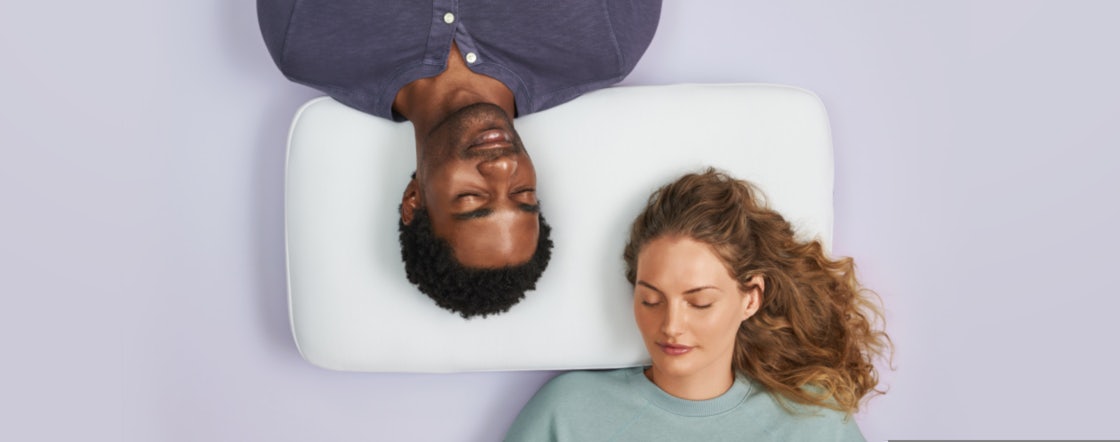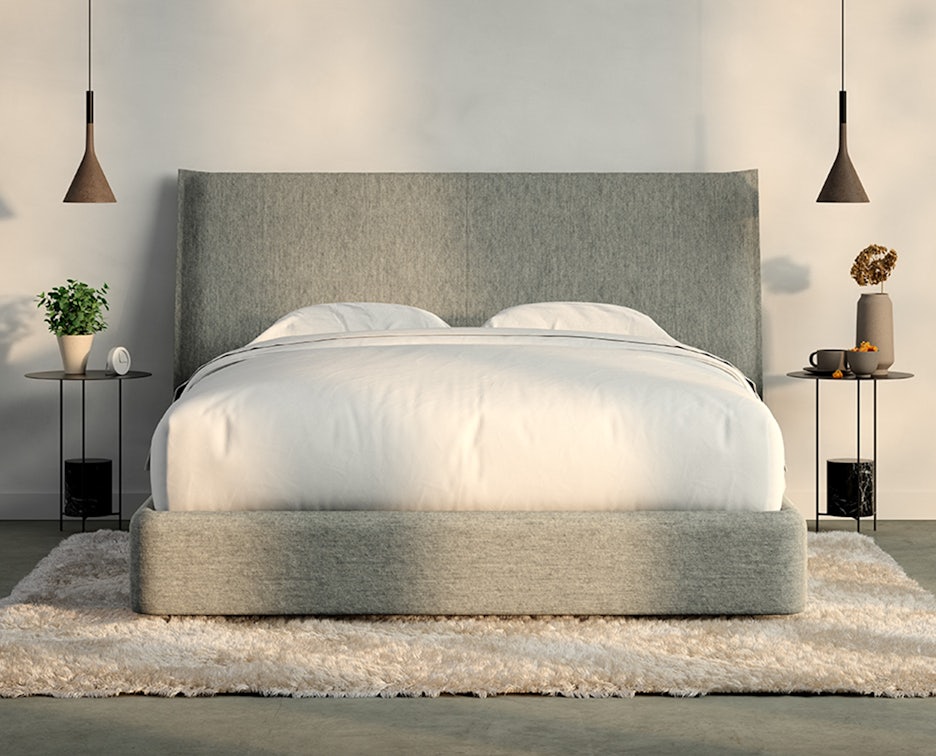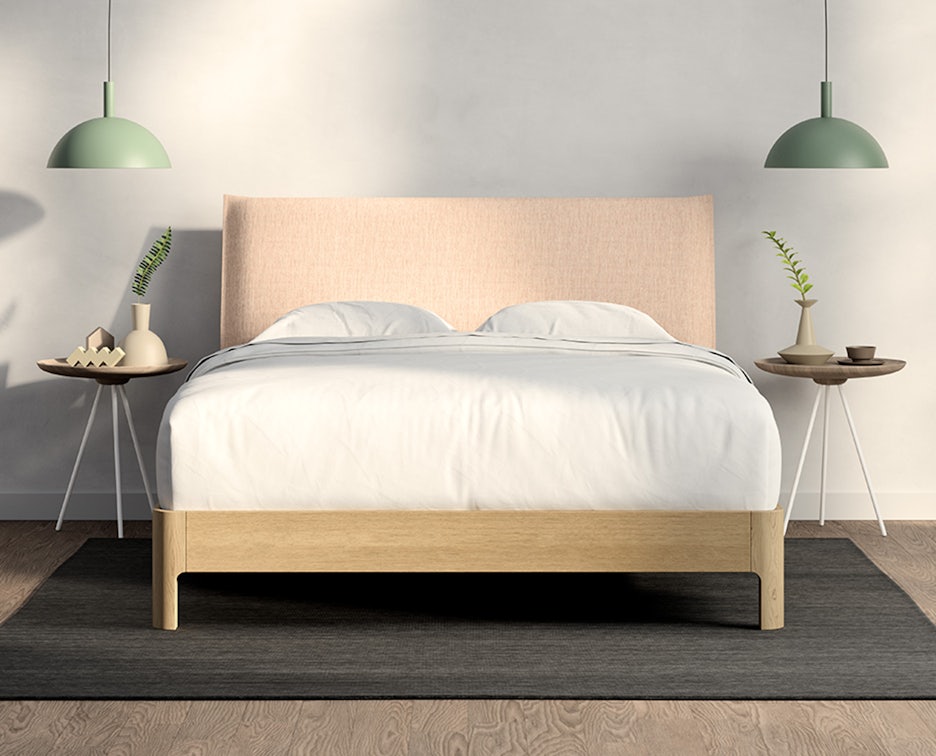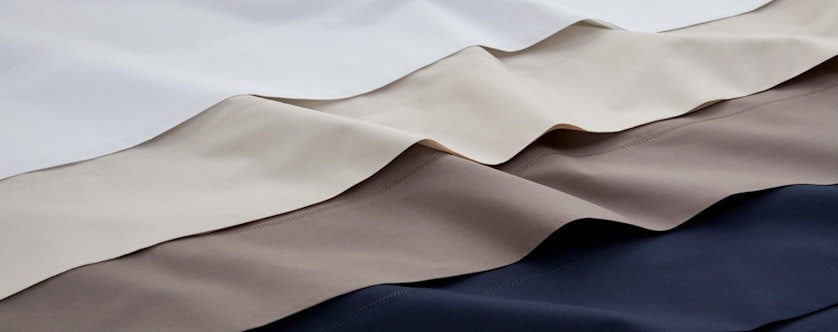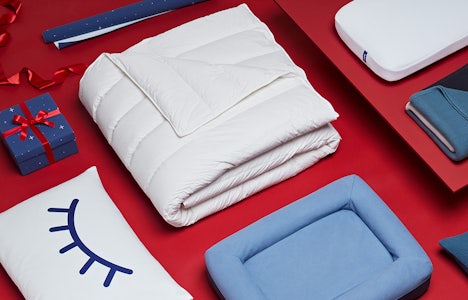
Memory Foam vs. Spring Mattress:
Everything You Need to Know
6/22/2020 | Casper Editorial Team
There are several different types of mattresses available to buyers. When it comes to the memory foam vs. spring mattress debate, there is a lot to consider.
Spring mattresses have been around for decades and are arguably one of the most traditional types of mattresses. They offer springy support in a variety of coil and spring types. On the other hand, memory foam mattresses are a lot more modern, with soft and dense features that have the ability to conform to the body and evenly distribute weight.
So how do you choose? Use our comparison guide below to weigh the pros and cons of memory foam vs. spring mattresses in order to choose the option best suited for your sleeping needs.
Memory Foam Mattress: Types, Pros, and Cons

A memory foam mattress is made out of a synthetic material called memory foam. Memory foam (also known as viscoelastic polyurethane foam) is dense, durable, and soft. It has a soft to medium firmness with a lifespan of about 10 years. It’s lauded for its heat-wicking abilities, support for aching joints, and the ability to evenly distribute weight.
The “slow-moving” properties of memory foam are what it’s most known for. Remember those ‘90s commercials where actors jumped on a bed with an unspilled glass of wine next to them? Those are the slow-moving and weight distributing properties in action.
Types of Foam Mattresses
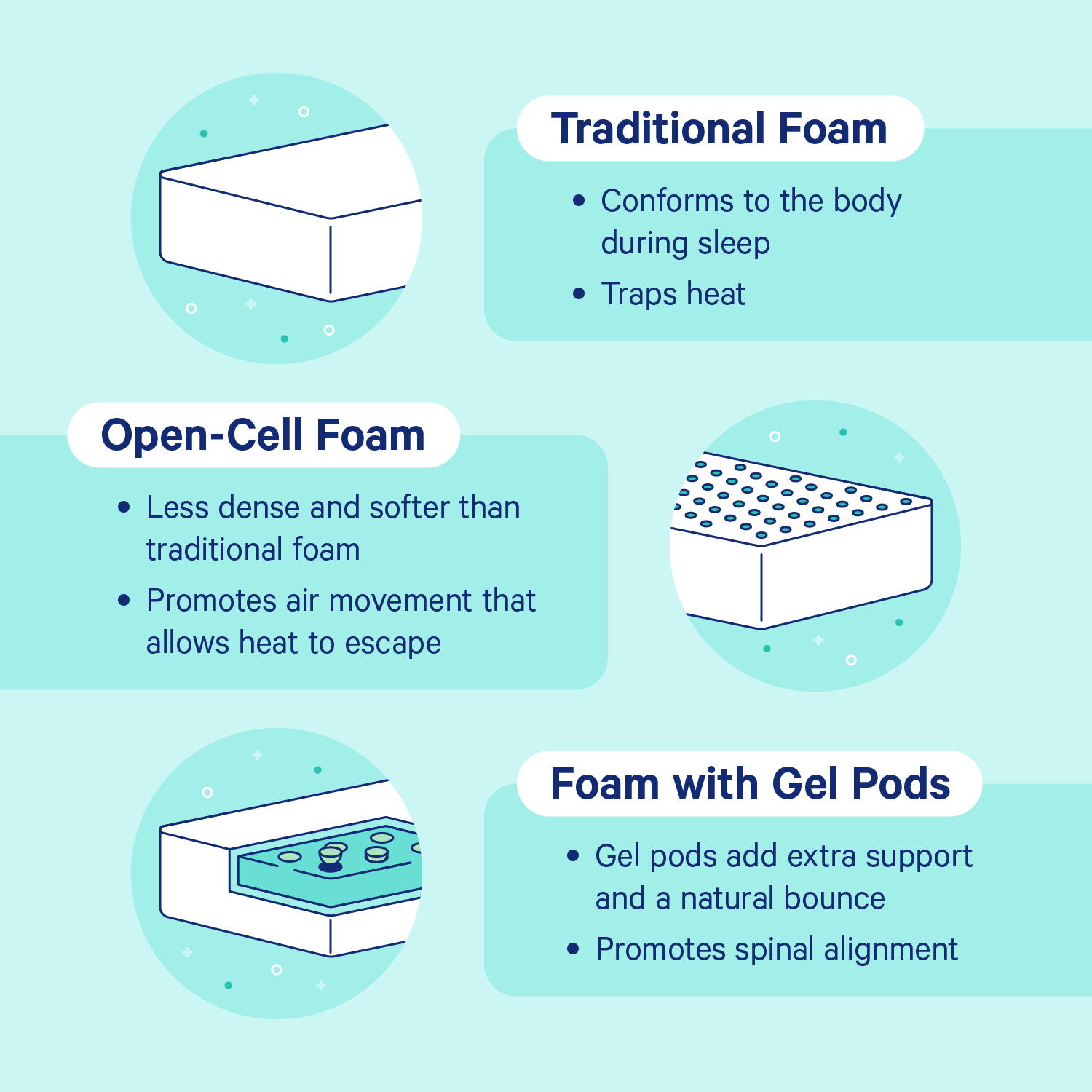
There are three types of memory foam mattresses: traditional foam, open-cell foam, and foam with gel pods. Each type has its own unique qualities and features.
Traditional foam: Traditional memory foam mattresses are built with a polyurethane foam that conforms to the body during sleep and a closed cell structure that traps heat.
Open-cell foam: Open-cell memory foam mattresses are less dense and softer than traditional foam mattresses. The “open-cells” create small tunnels that promote air movement throughout the mattress and allow heat to escape. The Casper mattress unites breathable open-cell foam with high-density memory foam for that signature “just right” feel.
Foam with gel pods: Foam mattresses with gel pods are considered more advanced mattresses when compared to the traditional and open-cell foam. Gel pods are added to the top layer of the mattress for extra support. This adds a natural bounce that helps the mattress pop back to its original shape. The Casper Wave Hybrid has gel pods under the waist and lower back to help keep your spine aligned in any position.
Construction
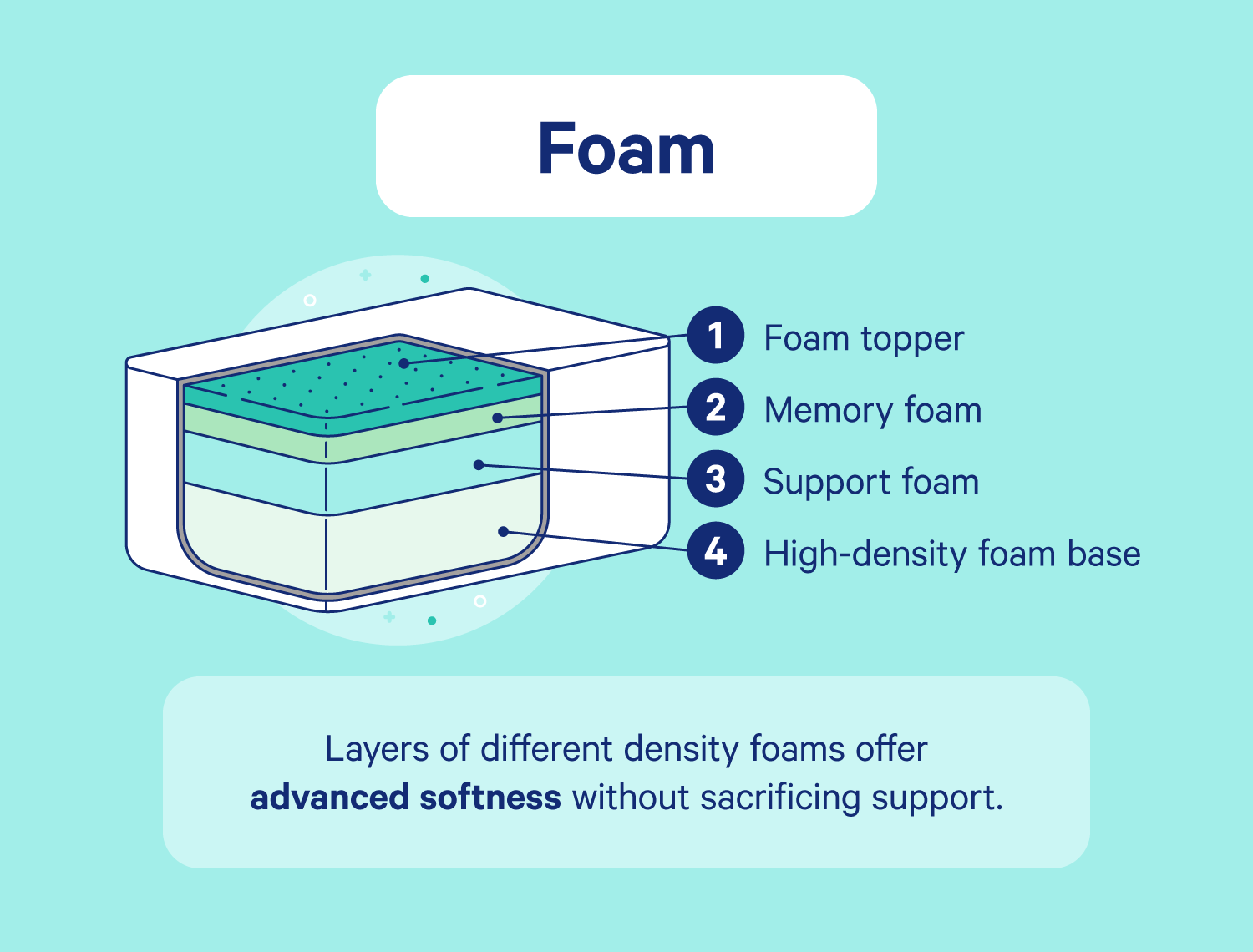
Memory foam mattresses are composed of several layers of foam. The bottom layer is made up of polyurethane foam. Polyurethane foam is made with several different density levels. The higher the density, the more durable the foam is.
However, the construction of your memory foam mattress will depend on what type of memory foam is used. On top of the polyurethane base is a transitional layer of support foam followed by several layers of memory foam. These layers can consist of several different materials including latex foams, memory foams, memory foam hybrid mixes, and more.
The firmness of a memory foam mattress is measured in indentation load deflection (ILD). This refers to the weight required to make an indention in the mattress. The lower the ILD, the softer the mattress. Memory foam densities range from low (1.5 to three pounds per cubic foot) to medium (four to five pounds per cubic foot) to high (six to eight pounds per cubic foot).
Pros
Cons
Spring Mattress: Types, Pros, and Cons
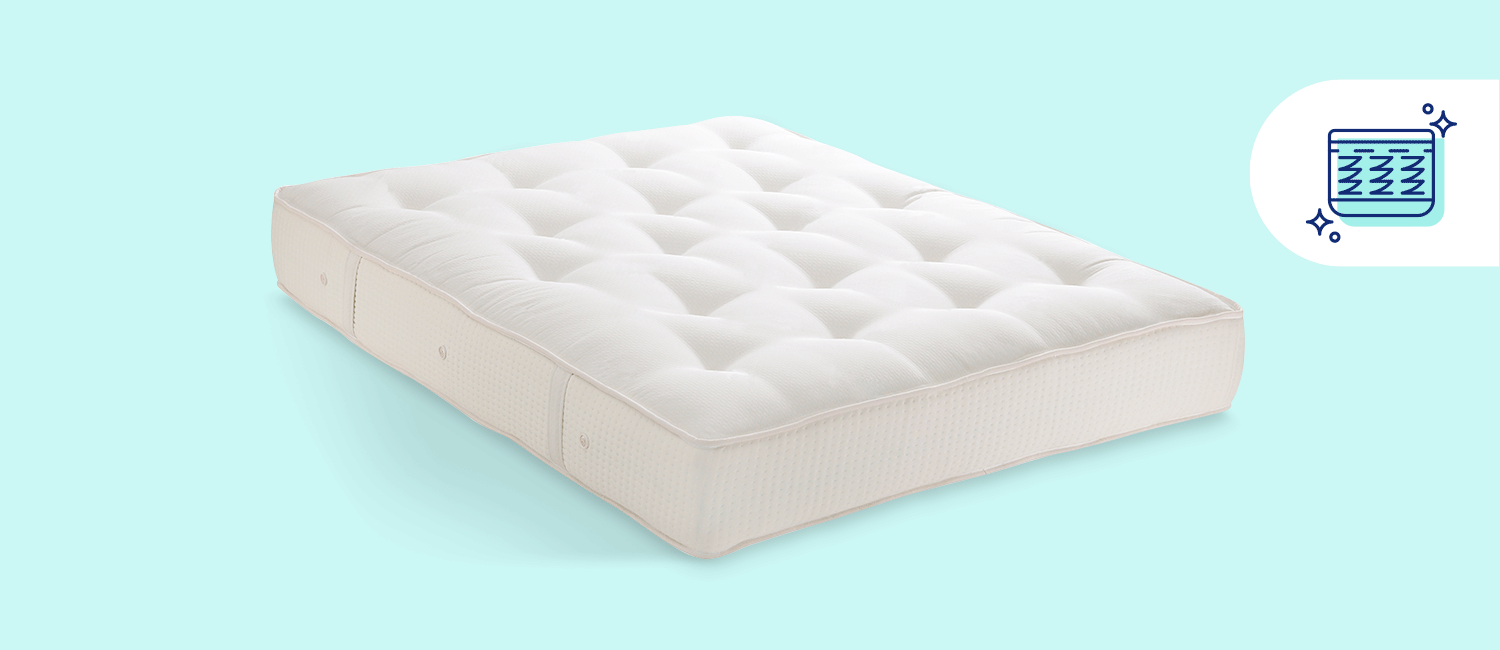
Spring mattresses, also known as innerspring mattresses, are the most traditional type of mattress. They are great for stomach sleepers, back sleepers, and those with lower back pain. They are also a great option for heavier individuals who find that foam mattresses do not offer the support they need.
Types of Spring Mattresses
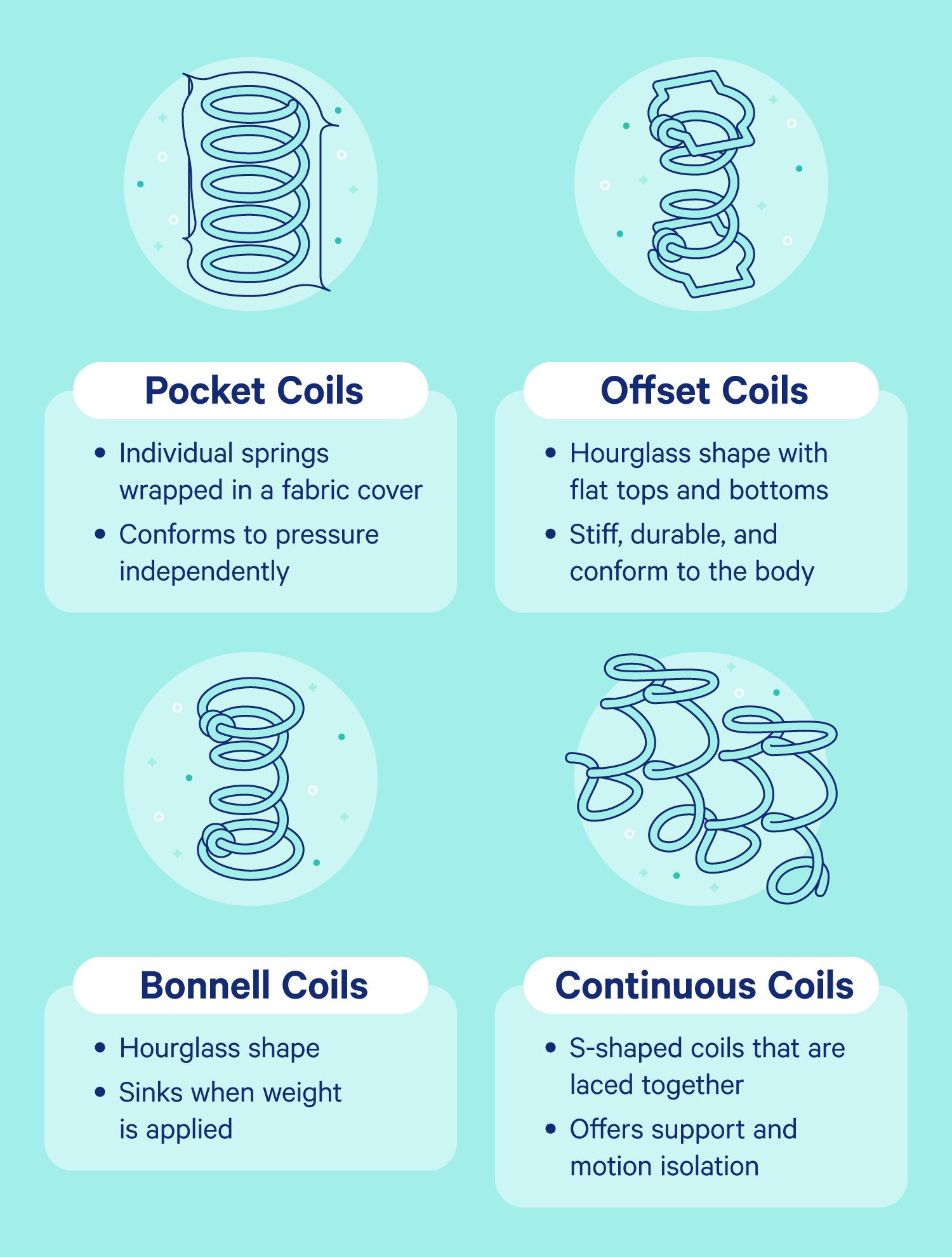
The different types of spring mattresses can be identified by the specific coils or springs that are used. The thicker the coils of an innerspring mattress, the firmer it is. Thinner coils are less firm but are able to shape to your body profile a lot better.
There are four different types of innerspring mattresses: pocketed, offset coil, Bonnell coil, and continuous coil. The higher the coil count, the better the mattress will conform to your body shape.
Pocket coils: Pocket coils are individual springs wrapped in a fabric cover. They tend to be more expensive to make and can often be found in higher-end mattresses. The construction of these coils allows each coil to function on its own — conforming to pressure independently and separating motion.
Offset coils: Like pocket coils, offset coils can be found in higher-end innerspring mattresses. They have an hourglass shape with flat tops and bottoms that join together with helical wires. These types of coils are stiff, durable, and conform to your body.
Bonnell coils: Bonnell coils can be found in most cheaper options of spring mattresses. They are hourglass-shaped and have a wide portion that flexes so the body can sink when weight is applied.
Continuous coils: Continuous coils are more supportive than Bonnell coils because they are composed of a long wire that is twisted into hundreds of S-shaped coils. These coils are connected by helical lacing that offers support and creates a motion-isolating feature.
Construction
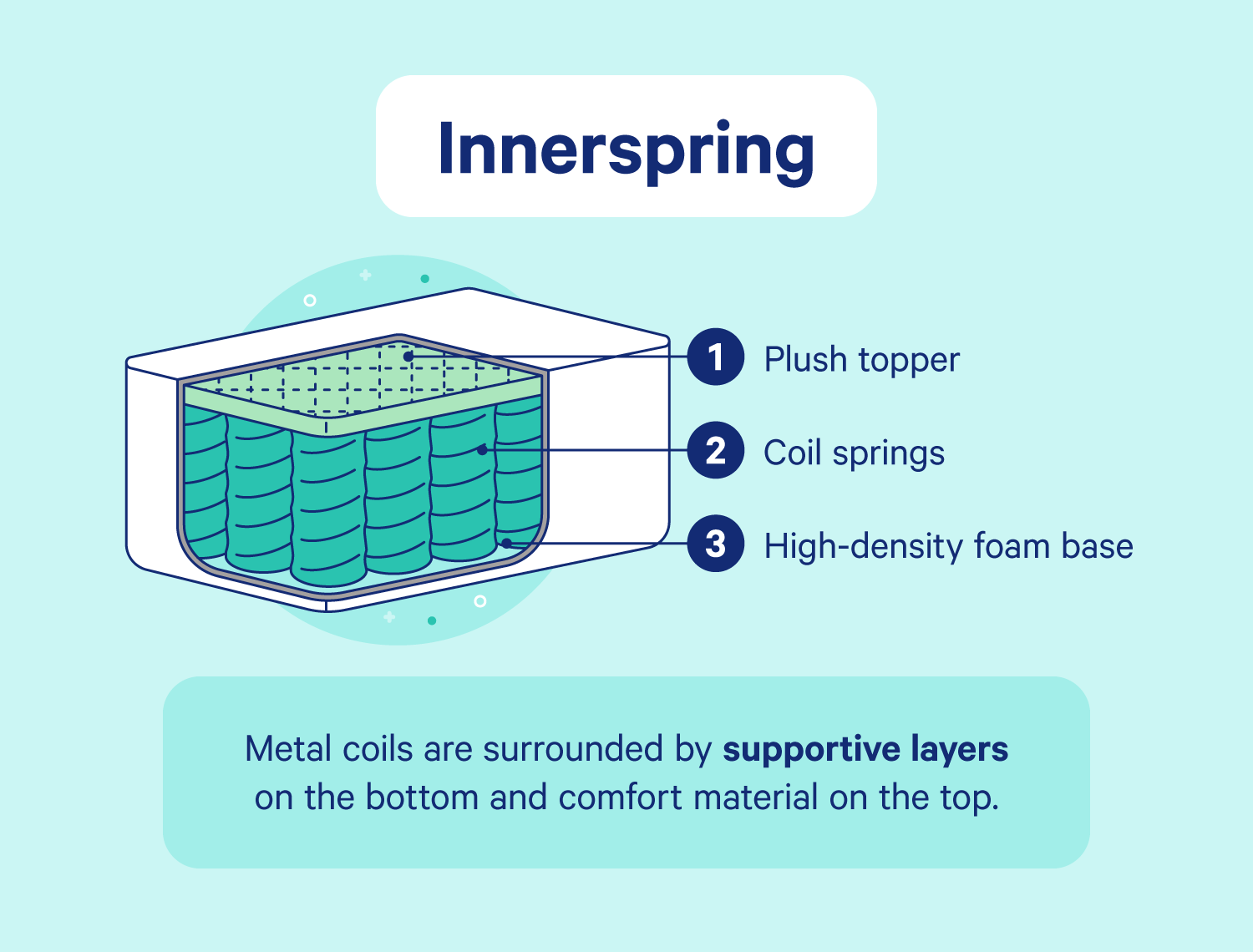
Innerspring mattresses are generally made of three layers. A high-density foam base is followed by a layer of coil springs. These springs are surrounded by layers of comfort material that include materials like natural fibers, foam, or latex. The metal coils are surrounded by supportive layers on the bottom and a comfort material at the top. The type of spring mattress you choose will determine what coil type and layout is used.
Pros
Cons
What’s the Difference?
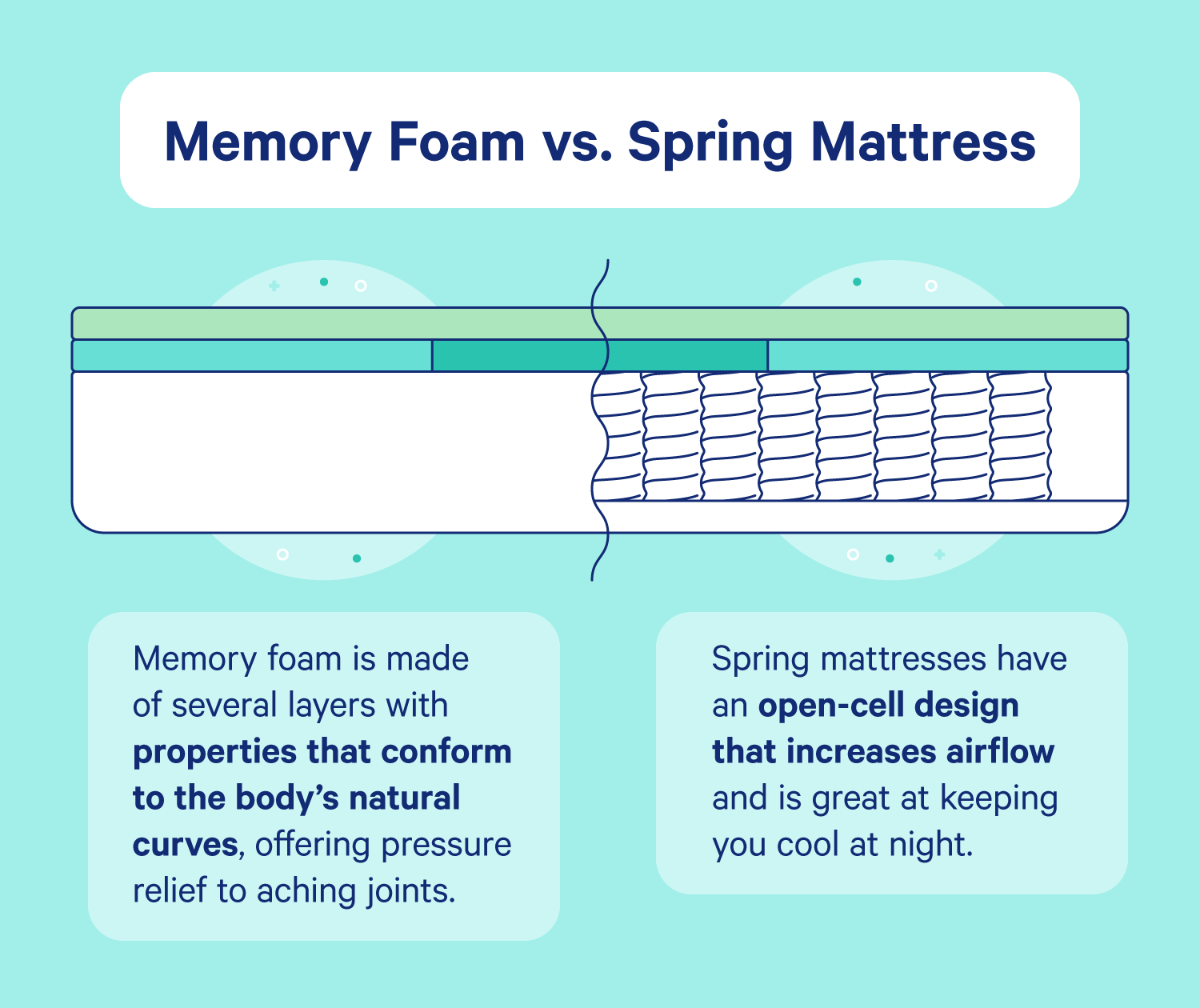
So, what are the main differences between memory foam and spring mattresses? There are pros and cons to each as discussed above and the type of mattress you choose will depend largely on what you’re looking for. Below we discuss some of the main features to keep in mind when choosing between these two mattresses.
Cooling Properties
Spring mattresses have an open-cell design that increases airflow and is better at keeping you cool at night compared to the memory foam mattress. However, in recent years, many memory foams now include cooling gels and advanced open cell structure to help regulate body temperature.
Check what your mattress is made of before committing to one. If you’re set on a memory foam mattress but are looking for cooling properties, choose one with open-cell foam or foam with gel pods as opposed to the traditional foam.
Motion Transfer
When it comes to motion isolation technology, a memory foam mattress is going to be the better choice. If you sleep with someone who tosses and turns each night, a memory foam mattress will help absorb that movement so you don’t feel it on your side. Spring mattresses will likely bounce with movement, resulting in you moving whenever your partner does.
Support
Both mattresses offer great support. While many think of foam as being soft, memory foam is made of several layers with properties that conform to the body’s natural curves, offering pressure relief to aching joints. If you need additional support, memory foam mattresses come in several degrees of firmness you can choose from.
Spring mattresses offer some support as well, but the support they offer is a lot more uneven. Memory foam does a better job of distributing body weight so you can feel supported in any position. If you’re looking for a spring mattress that offers the most support, opt for one with offset or pocket coils as opposed to continuous coil and Bonnell coil mattresses. The latter is going to offer less support and conformity than the offset and pocket coil options.
Durability
While spring mattresses can last a while, the springs can sag after years of use. However, the thicker the coils, the longer the mattress will last. Memory foam is generally considered to be the more durable option. The durability of a memory foam mattress relates to its density. The higher the density, the more long-lasting your mattress will be.
Comfort and Pressure Relief
Memory foam is boasted for its ability to adapt to the body’s natural curves and target pressure points such as the neck, spine, and shoulders. This feature offers relief to those major pressure points and a more personalized comfort than spring mattresses.
Generally, the metal construction of spring mattresses is less comfortable than memory foam. Bonnell coil and continuous coil spring mattresses do not offer much pressure relief. However, the individual springs of a pocketed coil mattress tend to offer the pressure relief many seek.
Cost
Both mattresses offer prices for a variety of budgets. In order to decide, take a look at the materials each is made of. The more expensive the material, the more expensive your mattress will be.
Memory Foam vs. Spring Mattress for Back Pain

Many people around the world experience back pain. Chronic back pain can lead to restless nights, insomnia, and sleep anxiety. If you experience back pain on a regular basis, it’s important to find ways to be comfortable when you sleep. Learning how to sleep with back pain shouldn’t be hard and the first step is finding a suitable mattress.
When it comes to choosing between memory foam and spring mattresses for back pain, higher-end spring mattresses — such as offset coil and pocket coil — are often best for those with back pain because they offer a solid combination of stiffness, springiness, and conformity. Bonnell coil and continuous coil spring mattresses will not offer the support and comfort many backache sufferers need.
On the other hand, multiple mattress review sites and medical websites have boasted memory foam for its abilities to reduce back pain. Memory foam is known for its localized support and ability to adapt to the sleeper’s body. However, some sleepers find the feel of a memory foam mattress to be too soft, whereas spring mattresses are more reactive and springy.
Side sleepers tend to prefer memory foam mattresses and pocket coil spring mattresses because they need support that molds to their pressure points. Back sleepers sleep with their spine in a neutral position and therefore don’t need much individualized support. Back sleepers would generally be fine with a Bonnell coil or continuous coil spring mattress. Everyone is different and ultimately the choice will come down to what type of sleeper you are and what feels most comfortable for your back.
Choosing Which Mattress is Right for You
Every sleeper is different. They type of mattress that works for you may not work for the next person. That’s why determining a true winner of the memory foam vs. spring mattress debate is a tough one. It’s important to look at your typical sleeping environment (what type of sleeper are you? Do you sleep with a significant other?) and weigh the pros and cons of each type of mattress.
Memory foam is great for those who want motion isolating technology and a mattress that conforms to their body and pressure points. However, while memory foam is softer in texture and feel, if you want a firmer feeling, the spring mattress will be the best bet for you. Your choice will come down to personal preference and hopefully our guide above will help give you the insight needed to make that tough decision. Make sure to pair your mattress with some comfortable bedding and a huggable pillow for the perfect sleep space.

